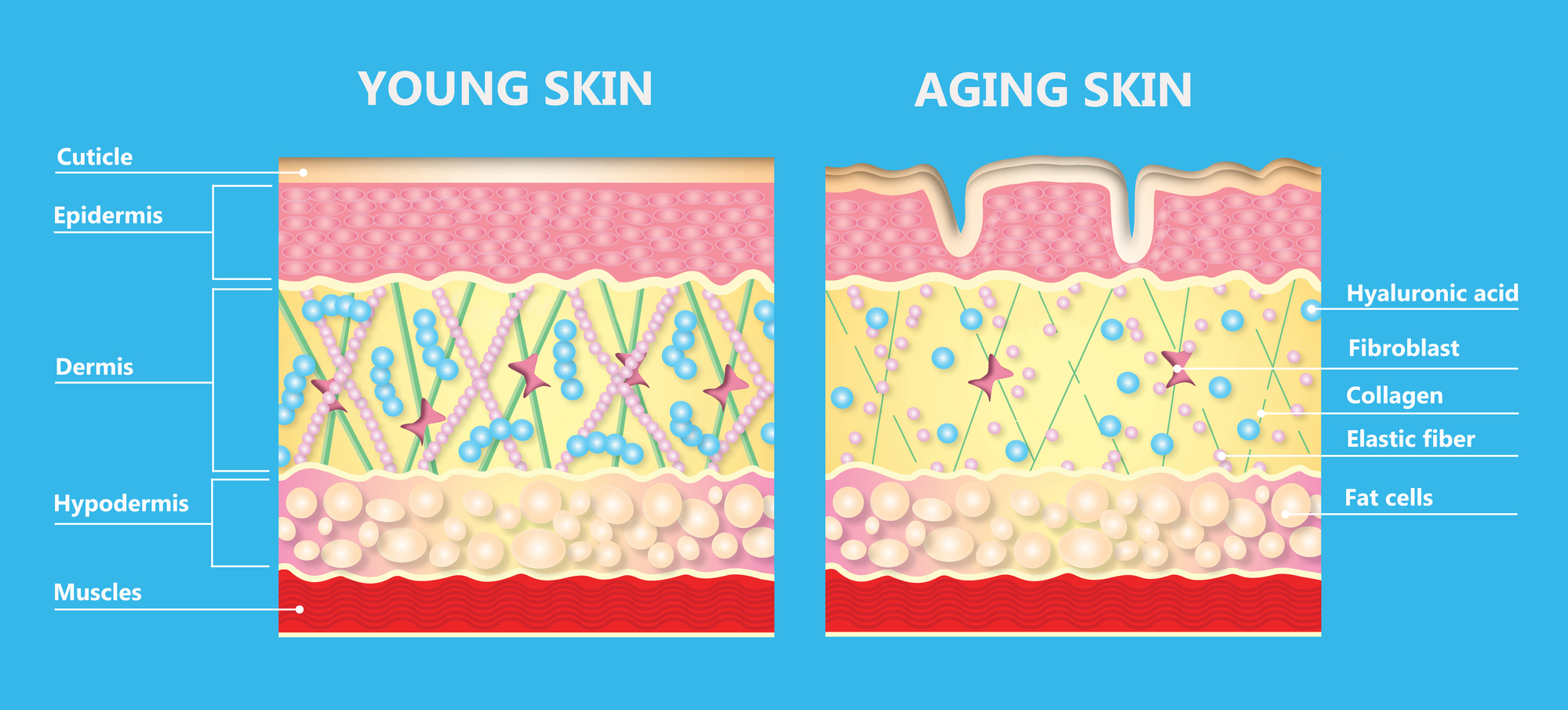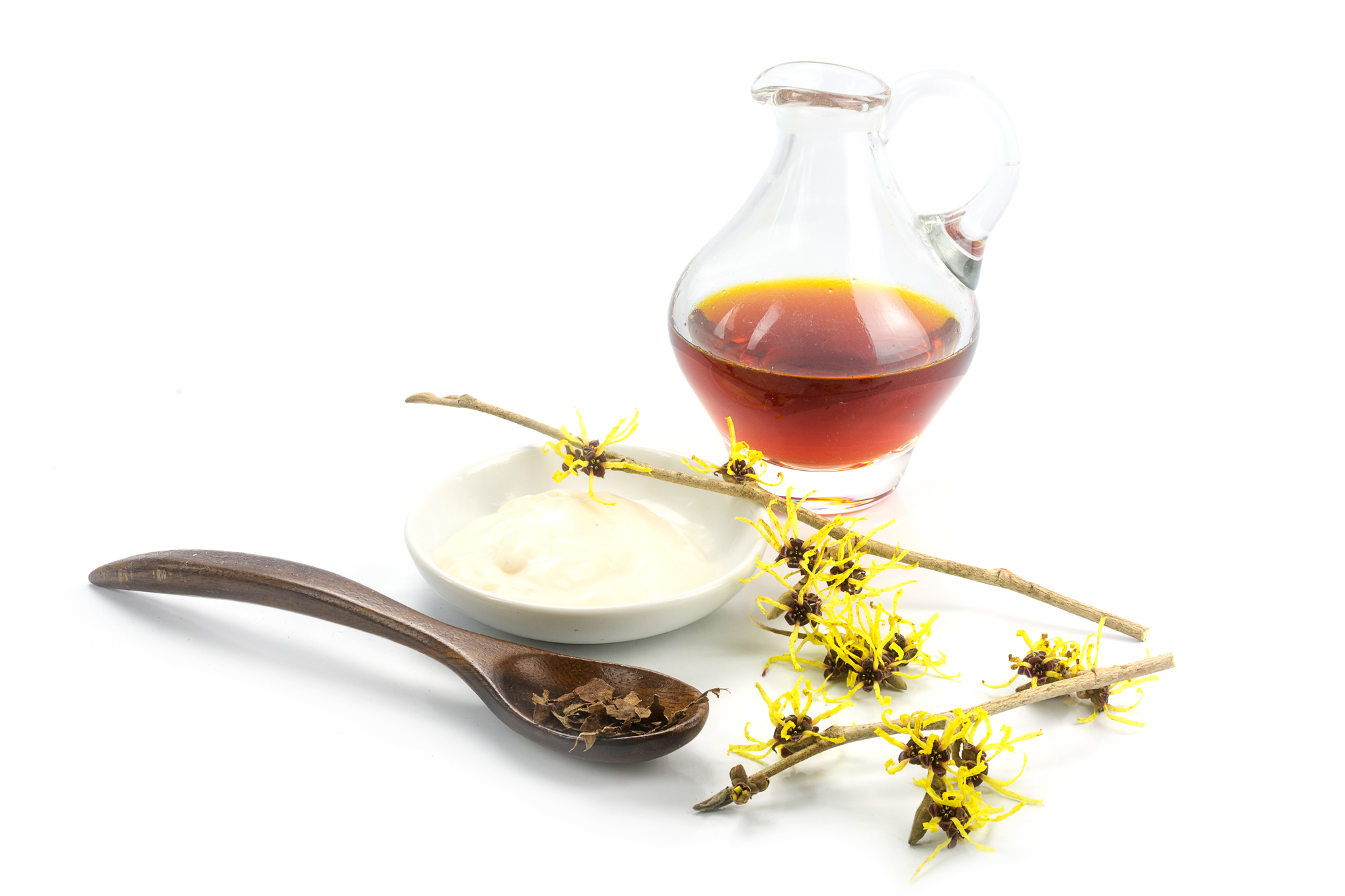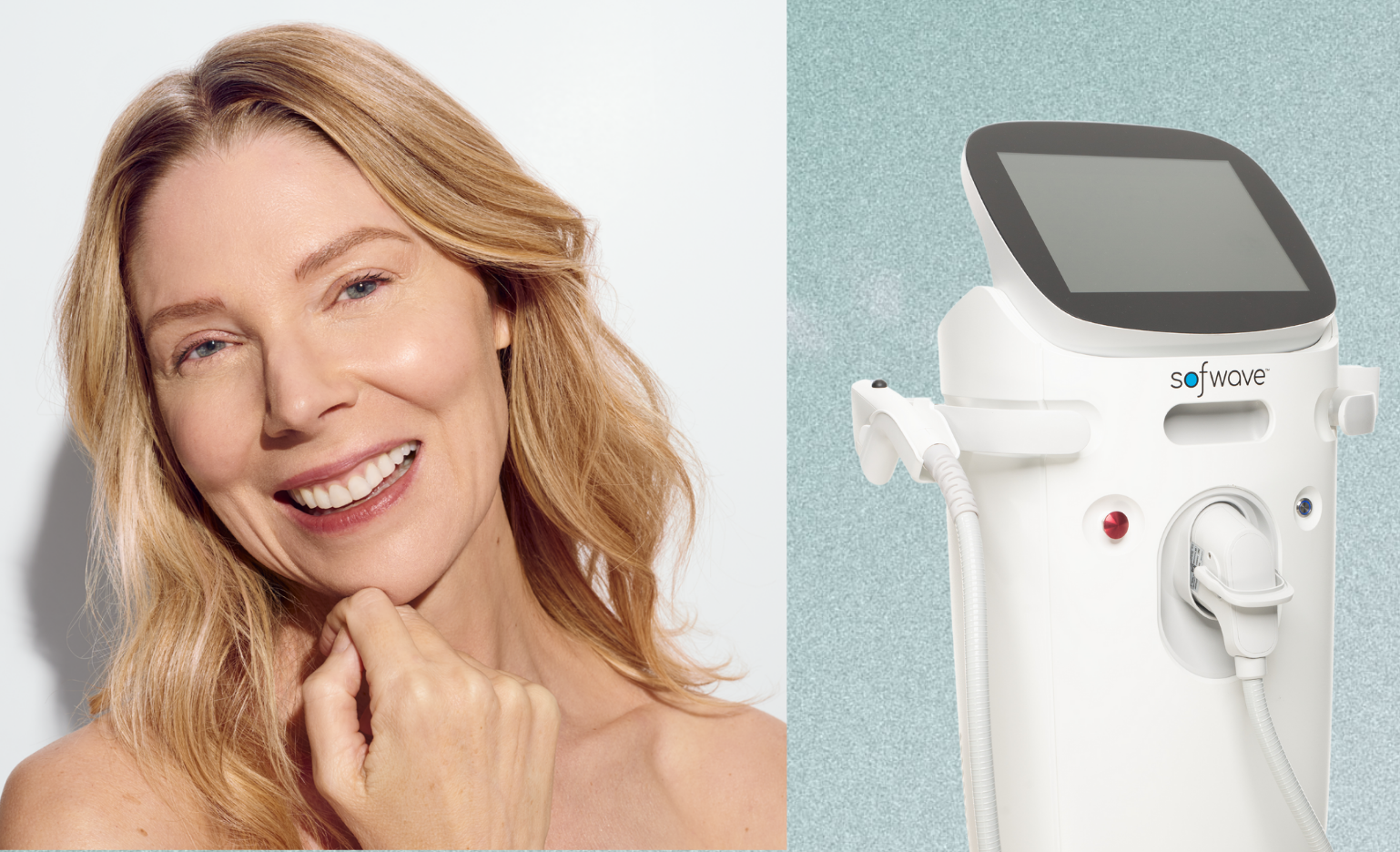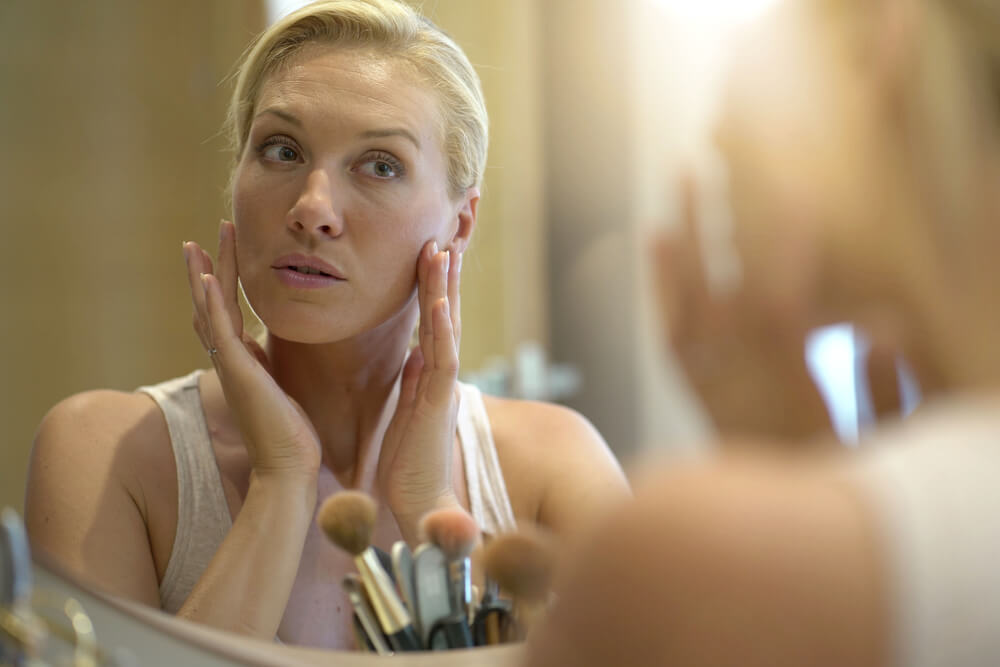
As we get older, we look in the mirror and sometimes see a frightful sight – our skin is sagging on our arms, our necks, and our faces. What is happening to us? The cold, hard fact is, that with each passing year, our skin loses elasticity. While we all want to see firm, taut, and healthy-looking skin when we look in the mirror, this firmness is in decline. So, how do we improve skin elasticity?
What does loss of skin elasticity look like?
Skin elasticity is our skin’s ability to bounce back to its original shape after it has been stretched. The loss of skin elasticity, a condition known as elastosis, causes our skin to look saggy, wrinkled, and tired. Loose and sagging skin, as well as more and more facial wrinkles, creases, and expression lines, are often the first signs that our skin’s elasticity is not what it used to be when we were in our 20s.
Where is elastosis usually most notable?
This loss of our skin’s elasticity is often most notable on the face. That’s because our facial muscles work hard to form thousands of expressions every day – smiles, frowns, laughs, cries, sneezes (you get the picture).

These facial muscles stretch and contract all day long every day. Like a rubber band, our skin snaps back less readily after all this continued use – skin naturally loses more elasticity as time goes on.
How do you know if you have poor skin elasticity?
You don’t need an appointment with your skin specialist to figure this one out. A simple “pinch test” is all you need to do to determine if your skin is showing signs of premature aging. For this test, place the palm of your hand on a flat surface, and pinch the skin on the back of your hand for 5 seconds. Then let the skin go, and count how long it takes this skin to return to being completely flat. Here is a guide to expected time frames:
- 29 years of age and under: 1–2 seconds
- 30–44 years of age: 3–4 seconds
- 45–59 years of age: 5–9 seconds
- 60–69 years of age: 10–15 seconds
- 70+ years of age: 35–55 seconds
Now that you’ve taken the pinch test, how did you do? How many seconds did it take for your skin to return to normal?
What causes loose skin elasticity?
Skin’s connective tissues are made up of mostly collagen and elastin, which the body naturally produces in our younger years. The dermal layer where collagen and elastin are found is in the skin’s middle layer, which is called the dermis. This production of collagen and elastin starts to decline when we are in our mid-20s, and our levels of these vital proteins decrease approximately 1–2% per year afterward. Because of this decrease in our levels of collagen and elastin, we begin to notice our skin sagging and losing elasticity when we are in our 30s and 40s.

Can your skin regain elasticity?
The good news is that, yes, we can revitalize our skin and help it regain a lot of the elasticity and firmness that we had in our younger days. We can repair our loss of skin elasticity by increasing our reserves of collagen and elastin – and also of hyaluronic acid, which helps skin stretch and flex.
What roles do collagen and elastin play in skin health?
Collagen is the most abundant protein in the human body, accounting for two-thirds of the dry weight of our skin. It provides structural integrity and connects our skin cells together. One of collagen’s main roles is to provide structure, strength, and elasticity to our skin. Without collagen growth, our skin starts to sag!
Elastin is the protein that gives skin its ability to bounce back after stretching. Our blood vessels and skin all have elastin fibers, allowing them to stretch and spring back to their original form.
Once levels of elastin and collagen are low due to the skin’s aging process, our skin has less structural and functional support, so it tends to start losing elasticity and crease and sag. Skin thickness also begins to thin. This natural aging process contributes to a slower turnover in skin cells, leading to skin sagging and wrinkles.

Can collagen supplements improve skin elasticity?
Studies have shown that both oral and topical collagen supplements can help to delay the aging process. Evidence suggests that collagen supplements encourage collagen production, which, in turn, improves skin elasticity. It also helps to ensure that we have properly hydrated skin. Revitalizing the body’s collagen production reduces wrinkling and skin roughness.
Do women and men lose skin elasticity at the same rate?
Women and men share the same decline rate – until women begin to take the lead during menopause when their rate of losing these proteins accelerates. In the first five years of menopause, which are driven by hormonal changes, women’s skin loses around 30% of its collagen and elastin production. In contrast, men’s skin continues to age gradually.
Do hormone levels affect skin elasticity?
As we get older, these hormonal changes contribute to lower levels of collagen and elastin. Menopausal women, for instance, can often improve skin elasticity through estrogen replacement, which helps to increase epidermal hydration and skin elasticity.

Hormone replacement therapy (HRT) supplies us with specific hormones that our bodies are deficient in. It introduces these hormones to our bodies gradually so those hormone levels increase and achieve balance over time. As HRT balances our hormonal levels, we typically notice improvements in our skin appearance – such as more youthful skin, improved skin elasticity, and increased skin firmness. It’s great to be able to roll back the clock, right?
What lifestyle factors negatively affect skin elasticity?
Our lifestyle habits can end up causing a lot of damage to our skin. We hear these warnings all the time, but many of us still put ourselves in harm’s way with:
- Sun exposure and ultraviolet (UV) rays
- Smoking and vaping
- Pollution and other environmental factors
- Chronic stress and lack of sleep

- Poor diet and eating habits
- Insufficient exercise
- Significant weight gain and excess skin
What are a few examples of how these factors affect our skin?
Let’s see…
Stress causes our bodies to produce more cortisol, which can break down the collagen and elastin in our skin, making it less firm and supple.
Too much sun exposure reduces collagen production and causes collagen to break down more rapidly. UV rays cause wrinkles.
Smoking damages collagen and elastin production, and nicotine constricts blood vessels near the skin’s surface, preventing the delivery of oxygen and nutrients to skin cells.
Lack of sleep can cause reduced collagen production and decreased skin elasticity. If we’re not getting seven to nine hours of restful sleep per night, this deprivation will show up in our tired-looking faces – eek!

Is broad-spectrum sunscreen good for the skin?
Yes! Everyone should apply sunscreen to their exposed skin every day. The American Dermatology Association recommends broad-spectrum sunscreens because this means they protect against both UVA and UVB rays. UVA rays can prematurely age your skin, causing loss of skin elasticity, wrinkles, and age spots, while UVB rays can cause sunburn.
Can essential oils help the skin?
Essential oils are highly concentrated and potent liquid plant extracts that have therapeutic benefits. Applying essential oils to our skin can tighten the skin and boost collagen production. They provide various benefits to the skin, including anti-aging, rejuvenation, and regeneration. These oils are powerful antioxidants that help with skin tightening by staving off free radicals and repairing damaged skin cells, as well as shrinking large pores, improving skin tone, and keeping skin taut to prevent sagging.
Studies show that certain plant oils, such as olive and jojoba oils, can help to increase collagen production in the skin. This increased production helps improve the natural elasticity of the skin, allowing it to better retain moisture and keep wrinkles at bay.
Can improper skin care decrease skin elasticity?
Neglecting your skincare can certainly take its toll! Going to bed with your makeup on can lead to clogged pores, excess oil, and breakouts – and this can disrupt collagen production and damage skin quality. And that is not the direction we want to go in – we want to improve our skin’s elasticity!

Skin specialists recommend that we should wash our face no more than twice a day. If we wash our face more often than this, we can strip our skin of its natural oils and moisture, which can lead to dehydration and the appearance of fine lines and wrinkles. And beware – tugging and rubbing on delicate facial skin can reduce elasticity and contribute to sagging, especially around the eyes.
Properly washing our face helps our skin slough off old skin cells so that new cells can rejuvenate the skin. Cell turnover is the continuous process of shedding dead skin cells and replacing them with new cells. Having a proper skincare routine is vital for healthy skin, as it encourages firm skin, and helps us to avoid fine lines and wrinkles.
How important is skin cell turnover?
The process of cell turnover is vital for improving skin elasticity, stimulating collagen production, and maintaining healthy skin. Without it, the old dead cells will accumulate on the skin’s surface and lead to problems ranging from blackheads, whiteheads, acne, hyperpigmentation, inflammation, and wrinkles. In addition, your skin will not look healthy and tight without the removal of these dead cells from the epidermis to allow for new skin cell growth. Skin specialists often use retinol and retinoids to encourage cellular turnover, stimulate collagen production, and reduce signs of aging skin.

How can we increase the cell turnover rate in the skin?
For skincare products that promote cellular turnover, look for ingredients such as retinol, alpha-hydroxy acids (AHAs), and beta-hydroxy acids (BHAs). Retinol, AHAs, and BHAs can help remove the top layers of the skin to promote cellular turnover and firmer skin.
How important is skin hydration for elasticity?
Skin aging is also associated with a loss of skin hydration. The key molecule involved in skin moisture is hyaluronic acid, which has a unique capacity to bind and retain water molecules. As we get older, we can use hyaluronic acid serum to help rehydrate our skin and improve overall skin flexibility and elasticity.
And, of course, drinking plenty of water keeps us hydrated, which also helps to improve skin elasticity. People who drink large amounts of water are less likely to suffer from scars, wrinkles, and soft lines, and they won’t show as many signs of aging as those who drink small amounts of water.
Does hyaluronic acid help to restore skin elasticity?
Hyaluronic acid is one of the keys to restoring skin elasticity. It can also promote skin cell production, which makes our skin appear smoother and more youthful. Hyaluronic acid is also proven to help reduce wrinkles, dermatitis, dry skin, and redness!

Is witch hazel effective for skin elasticity?
Yes, this natural astringent can actually work just as well as commercial beauty products! Topical witch hazel is known for helping to protect collagen and skin elasticity, and its anti-inflammatory and antioxidant properties are great for preserving skin elasticity.
Is vitamin C important for our skin?
A diet high in antioxidants, such as vitamin C, vitamin E, carotenoids, and lycopene, can help maintain skin elasticity and minimize skin aging. Vitamin C is not limited to just citrus fruits – we can get a lot of it through veggies such as broccoli, red peppers, and spinach, too! Additionally, topical vitamin C can encourage new collagen to grow. This vitamin also helps to maintain our existing collagen and to protect it from damage.
Can natural oils and essential oils promote collagen production?
Yes, they can! Certain plant oils, such as olive and jojoba, can help to increase collagen production in the skin. This increased production helps improve the elasticity of the skin, allowing it to better retain moisture and keep wrinkles at bay.

What internal factors affect our skin?
Along with the natural aging process, we also have to factor in our genetics and hormone levels, as well as our skin’s ability to produce collagen and elastin, and the diminishing function of our oil glands. Since oil glands keep skin hydrated and supple, the decreased function of these glands means that our skin will become drier and more prone to loss of skin elasticity. Over time, our skin will lose elasticity at a faster and faster rate unless we pay attention to it. Our goal is to avoid decreased skin elasticity!
How important is diet for minimizing skin laxity?
Healthy diets should include proteins (such as amino acids), vitamins, Omega-3 fatty acids, and water to encourage the production of collagen and elastin, and to ensure that we keep our skin hydrated. For skin firmness, strength, and elasticity, we should consume foods that are rich in collagen and elastin. Our bodies make collagen by combining amino acids that are found in protein-rich foods like beef, chicken, fish, beans, legumes, eggs, nuts, and dairy products.
How do amino acids help reduce sagging skin?
Amino acids are responsible for producing the proteins that are responsible for our overall skin health – proteins such as keratin, elastin, and collagen. These proteins are crucial for maintaining firm, supple, and smooth skin, and, without them, we are more apt to see sagging skin in the mirror, along with those fine lines and wrinkles.

When should we seek medical treatments for elastosis?
We want to do everything we can not to lose elasticity in our skin, but, if lifestyle changes and anti-aging skincare products have not produced the results that we’re after, then medical treatments may be the next step.
What are traditional medical procedures for improving skin elasticity?
In addition to laser resurfacing and radiofrequency procedures, among many others, skin specialists have also traditionally provided chemical peels to help us turn back the clock on skin aging. Chemical peels stimulate new collagen production and the regeneration of new skin cells to rejuvenate the skin and restore its youthful glow. Chemical peels are most often used to improve the appearance of sagging skin in the face and neck.
How can we deal with excess skin?
To deal with excess skin, especially after weight loss, body contouring surgery is another medical option for tightening skin and muscles in a particular area. Body contouring procedures can firm up jiggly arm skin, tighten loose abdominal skin, and rejuvenate sun-damaged skin.
How can platelet-rich plasma treatments help our skin?
Platelet-rich plasma (PRP) injections consist of two elements: plasma (the liquid portion of blood) and platelets (a type of blood cell that plays an important role in healing throughout the body). Platelets contain growth factors that can trigger cell reproduction and stimulate tissue regeneration in the treated area.

Placing PRP back into the skin encourages cell proliferation, leading to increased elastin and collagen production. These treatments help skin look tighter, fuller, and smoother.
What is the next-generation breakthrough for treating our skin?
In 2020, Sofwave™ unveiled its proprietary Synchronous Ultrasound Parallel Beam (SUPERB™) technology for treating wrinkles and lax skin. Sofwave procedures are clinically proven to remodel collagen, which improves facial lines and wrinkles, and lifts the eyebrows, submental, and neck area.
Sofwave treatments are appropriate for all skin types, which means that you don’t have to worry about a negative outcome. These ultrasound procedures prompt your body to just do its thing and produce more collagen and elastin – the two essential building blocks in your skin!
What are Sofwave treatments like?
Before a Sofwave™ procedure begins, a topical anesthetic cream is applied to your skin so you can feel more comfortable while experiencing what is, for most patients, a tolerable level of discomfort as the ultrasound energy is delivered.

Sofwave’s ultrasound energy passes through the skin’s surface, heating the mid-dermal tissue at just the precise depth and temperature to rejuvenate collagen fibers, which, in turn, lifts the skin. During the treatment, the system’s Sofcool™ cooling mechanism protects your skin from burning – which is important for ensuring safety.
After the procedure, there is little residual discomfort, and you can go right back to your activities. Sofwave™ procedures take about 45 minutes, making it possible for you to schedule a treatment over your lunch hour and then to return to work with your skin feeling fully refreshed! Most Sofwave patients show significant improvement after just this one 45-minute treatment.
Have Sofwave treatments been FDA-cleared?
The U.S. Food and Drug Administration (FDA) has cleared Sofwave SUPERB technology for lifting the eyebrow and lifting lax submental tissue (beneath the chin) and neck tissue, which can also affect the appearance of lax tissue in the submental neck regions.
The FDA has also cleared SUPERB™ technology for a non-invasive dermatological aesthetic treatment to improve facial lines and wrinkles, and to improve the short-term appearance of cellulite.

Where are Sofwave treatments available?
Sofwave providers are in North America, Europe, Israel, and APAC – and in January 2023, Sofwave announced that it has also received market approval for Sofwave SUPERB technology to be offered in Mexico – the second-largest aesthetic medical market in Latin America.
Sofwave also has regulatory submissions pending in other large markets, including China and Japan. So, soon, wherever you are, you’ll be able to receive Sofwave treatments!
If you are in the U.S., you can find a provider near you on this site. To feel more confident in your appearance, why don’t you look into Sofwave now?
It’s never too late to enjoy seeing a more revitalized version of yourself in the mirror!
References:
- “Signs that your skin is losing elasticity and ways to regain it,” Kaitlyn Wilson, Software Skin Journal, https://www.skin.software/journal/skin-elasticity
- “Skin Elasticity: 13 Ways to Improve It,” Corey Whelan, Healthline, https://www.healthline.com/health/beauty-skin-care/skin-elasticity#:~:text=Loss%20of%20skin%20elasticity%20is%20known%20as%20elastosis.,those%20protected%20from%20sun%20exposure
- “Signs of Premature Aging,” Cleveland Clinic, https://my.clevelandclinic.org/health/symptoms/23105-premature-aging#:~:text=Poor%20sleep%3A%20Studies%20show%20that,vibrant%3A%20hyaluronan%20synthase%20and%20collagen
- “Top Treatments that Improve Skin Elasticity,” U.S. Dermatology Partners, https://www.usdermatologypartners.com/blog/treatments-that-improve-skin-elasticity/
- “What is Skin Elasticity & How Can You Improve It?,” Reviewed by Alessandra Zonari, PhD, OneSkin’s Chief Scientific Officer and Co-Founder, OneSkin, https://www.oneskin.co/blogs/reference-lab/skin-elasticity
- “11 Ways to Improve Your Skin Elasticity,” Sowmya Tamatam, SkinKraft Laboratories, https://skinkraft.com/blogs/articles/skin-elasticity
- “How to Improve Skin Elasticity, According to Dermatologists,” Noma Nazish, Forbes, https://www.forbes.com/sites/nomanazish/2021/08/28/how-to-improve-skin-elasticity-according-to-dermatologists/?sh=5ecc5de77a65
- “Are There Benefits to Collagen Supplements?,” Gabriela Ulloa, New York Times, https://www.nytimes.com/2019/11/09/style/self-care/collagen-benefits.html
- “Collagen,” Cleveland Clinic, https://my.clevelandclinic.org/health/articles/23089-collagen
- “How to Improve Skin Elasticity – The Ultimate Guide to Getting Your Bounce Back,” Waterhouse Young Clinic, https://waterhouseyoung.com/how-to-improve-skin-elasticity-the-ultimate-guide/
- “Which Essential Oils Help Get Rid of Wrinkles?,” Jenna Fletcher, Medical News Today, https://www.medicalnewstoday.com/articles/321645
- “Cell Turnover & Why It Slows As We Age,” Reviewed by Alessandra Zonari, PhD, OneSkin, https://www.oneskin.co/blogs/reference-lab/cell-turnover-why-it-slows-as-we-age
- “Platelet-Rich Plasma (PRP) Injections,” Johns Hopkins Medicine, https://www.hopkinsmedicine.org/health/treatment-tests-and-therapies/plateletrich-plasma-prp-treatment#:~:text=After%20the%20procedure%2C%20you%20may,Bleeding



